Complete Guide to Reliance Water Heater Thermostat Replacement
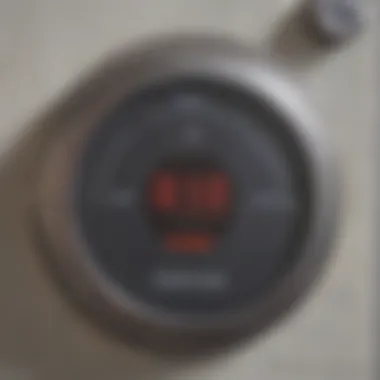
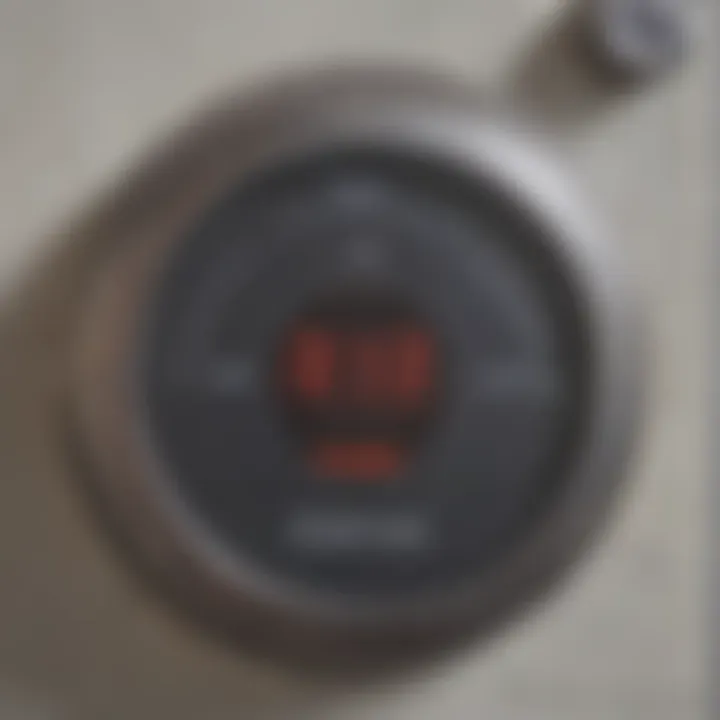
Intro
Water heaters are often the unsung heroes of our homes, working tirelessly behind the scenes to ensure hot showers and comfortable living. Among the many components that keep these units running smoothly, the thermostat holds a pivotal role. When it falters, the comfort of your home can quickly become compromised. For homeowners and housewives alike, understanding how to replace the thermostat in a Reliance water heater can save time, money, and unnecessary hassle.
In this discussion, we’ll explore why these replacements sometimes become necessary, outline common challenges faced during this process, and provide actionable steps for getting behind those repair projects without breaking a sweat. The right knowledge can empower you, ensuring you tackle the thermostat replacement with ease.
Understanding the Thermostat's Role
When it comes to ensuring your Reliance water heater operates efficiently, understanding the role of the thermostat is fundamental. The thermostat is essentially the brain of the heating system, governing the temperature of the water and ensuring that it meets your household needs. Without a properly functioning thermostat, not only can you forget about enjoying a hot shower, but you could also be increasing energy costs unnecessarily.
Function of the Thermostat in Water Heating
The thermostat's primary function is to regulate the temperature of the water within the heater. When the heater is turned on, the thermostat senses the water temperature. If it falls below the set level, it activates the heating element to warm the water. Once the desired temperature is reached, the thermostat turns off the heating element. This cycle repeats as needed, providing a consistent water temperature.
The importance of this regulatory action cannot be overstated. When the thermostat works correctly, it means that your water heater can deliver hot water efficiently while conserving energy. If you suffer from frequent fluctuations in water temperature, one of the first culprits to investigate is the thermostat itself.
Impact of Thermostat Settings on Efficiency
The settings you choose on your thermostat also greatly influence overall energy efficiency. A common misconception is that setting your thermostat to a higher degree will heat water faster, but in reality, it can lead to considerable energy waste. Instead, setting it at a moderate level (around 120 degrees Fahrenheit) strikes a balance between comfort and efficiency.
Moreover, improper settings can result in overheating, leading to the potential damage of components and increasing wear and tear on the unit. Therefore, understanding how to calibrate your thermostat correctly can not only enhance your comfort but also extend the lifespan of your water heater.
"An informed consumer is an empowered consumer. Understanding your water heater's thermostat can save you time and money in the long run!"
In summary, the thermostat plays a pivotal role in maintaining the functionality of your Reliance water heater. Grasping how it works, and the implications of your settings, can help you achieve optimal performance while keeping energy consumption at bay.
Identifying When Replacement is Necessary
Recognizing when it’s time to replace the thermostat in your Reliance water heater is crucial. Ignoring the signs of wear or malfunction can lead not only to a lack of hot water but also to inefficient energy use. If you’re experiencing fluctuating temperatures or even complete heat loss, these are potential signs that your thermostat isn’t working as it should. Being proactive saves you money in utility bills and extends the life of your heating unit, knowing when and how to act can empower you as a homeowner.
Signs of a Failing Thermostat
A thermostat, despite its small size, plays a significant role in ensuring your water heater runs efficiently. The first indications that something may be amiss often appear subtly. Here are some indicators to watch for:
- Inconsistent water temperature: If your water heater is delivering water that’s either too hot or not hot enough, the thermostat may be struggling to get a precise reading.
- Unexpected spikes in energy bills: A malfunctioning thermostat can lead to overworking the heating elements, which can significantly hike your utility costs.
- The heater runs continuously: When the thermostat fails, it can cause the heater to operate indefinitely, troubling to both your finances and safety.
- Physical damage or wear: Sometimes it’s about what you see. Look for rust, corrosion, or burns near the thermostat. Physical signs often speak volumes about its condition.
Paying attention to these signs can help you avoid further complications and expenses down the road.
Common Issues Linked to Thermostat Malfunctions
A malfunctioning thermostat doesn’t just affect temperature regulation; it can lead to a myriad of problems, some of which may require immediate attention. Understanding these connections can help you act promptly. Common issues include:
- Water leakage: If the thermostat is malfunctioning, it can cause excessive pressure, leading to leaks in your water heater, which can be a significant issue.
- Sediment buildup: Faulty reading might cause the heater to overheat, resulting in a greater accumulation of sediment at the bottom of the tank, affecting efficiency.
- Electrical failures: A fried thermostat can short-circuit the entire unit, resulting in costly repairs or complete replacement.
For your peace of mind, regularly checking the condition of your thermostat and understanding these related issues can save time, hassle, and possibly money.
Important Note: Regular maintenance can prevent many of the issues associated with a failing thermostat. It’s advisable to schedule periodic checks to ensure everything’s running smoothly.
Preparing for the Replacement Process
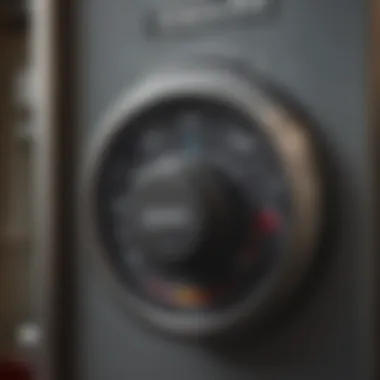

Before diving into the intricacies of replacing your Reliance water heater's thermostat, it is paramount to prepare adequately. This preparation not only ensures the process goes smoothly but also helps in minimizing risk factors, increasing efficiency, and saving time. You don’t want to find yourself halfway through the task, realizing you’re missing crucial tools or, worse, in a situation where safety is compromised.
When you gear up properly, you pave the way for a seamless replacement experience, facilitating an understanding of the components involved, and potentially simplifying future maintenance tasks.
Gathering Required Tools and Materials
Having the right tools at your fingertips is half the battle won during the thermostat replacement process. Here’s a list of essential items you’ll need:
- Screwdrivers (both flat-head and Phillips-head, to ensure you can remove all types of screws)
- Wire cutters and strippers (to disconnect and prepare wires for the new thermostat)
- Multimeter (to check voltage and ensure the power is off)
- Replacement Thermostat (specific to your Reliance water heater model)
Before you begin, gather all these tools in one convenient location. You don’t want to hunt around the house for a screwdriver when you're in the middle of your work. Also, ensure that the replacement thermostat meets the specifications and compatibility of your existing water heater. It can save a lot of headaches and prevent unnecessary returns or exchanges.
"A stitch in time saves nine" – Ensuring you’ve got everything you need before starting can lead to a smoother, faster job and prevent those frantic runs to the hardware store.
Ensuring Safety Measures are in Place
Safety cannot be stressed enough when working with electrical appliances like water heaters. Here are employable steps to ensure a safe working environment:
- Turn off the power supply at the circuit breaker that powers your water heater. You won't be able to unscrew or handle the thermostat safely if there’s live power.
- Disconnect the water heater from its water supply line to prevent any accidental leaks.
- Wear protective gear: Gloves will safeguard your hands, while safety goggles protect your eyes from any unexpected debris.
- Have a fire extinguisher nearby as a precaution against electrical mishaps.
Following these safety measures helps in creating a secure environment, making sure you can focus on the task at hand without added stress. The peace of mind this brings is invaluable, especially for those who may feel a bit apprehensive about DIY projects.
Making sure that preparation is a priority not only fosters a successful thermostat replacement but also empowers you with the knowledge and confidence for any future maintenance tasks. Proper preparation lays the groundwork for achieving the desired result.
Step-by-Step Guide to Thermostat Replacement
Replacing the thermostat in your Reliance water heater can feel daunting, but it's a critical task that ensures the optimal performance of your heating system. This step-by-step guide not only alleviates fears but also highlights the sheer importance of understanding each segment of the replacement process. It brings clarity and facilitates a sense of accomplishment in homeowners, demonstrating that being proactive can enhance comfort and save on future repairs.
By following these detailed steps, you can engage directly with your appliance, understanding how it operates while saving costs typically associated with calling professionals. Let’s delve into the individual steps of this process.
Powering Down the Water Heater
First and foremost, safety should be your priority. Before starting any work on your water heater, it's imperative to power it down. This can typically be done by switching off the circuit breaker associated with the water heater. If your model is electric, ensure the heating elements are completely powered off.
- Locate the Circuit Breaker Box: This is usually found close to the garage or utility area. Look for the label that indicates the water heater.
- Switch Off: Flick the breaker switch to the off position. A simple task, yet vital to avoid any electrical mishaps.
- Confirm Power is Cut: Use a multimeter or simply try turning on the heater. If it doesn't respond, you’re on the right track.
Safety tip: Always wait for a few moments after cutting the power before touching any components to allow time for internal parts to cool.
Removing the Cover Panel
Once you have ensured that there is no power going to the heater, it's time to remove the cover panel. This panel protects the thermostat and wiring inside, and removing it exposes the components you will be working on.
- Locate the Cover Panel: Usually, this is on the front of your water heater.
- Unscrew: Using a screwdriver, carefully remove the screws holding the panel in place. Keep these screws in a secure location to prevent loss.
- Gently Lift Off: Once unscrewed, lift the cover off gently. It's crucial to handle this with care to avoid damaging any attached elements.
Disconnecting the Old Thermostat
With the cover panel removed, the old thermostat should be visible. Disconnecting this component requires a careful approach to ensure no wires are damaged.
- Identify the Thermostat: Typically located near the top or bottom of the heater.
- Label Wires: Using tape or labels, mark where each wire connects to the thermostat. This step will save you time during installation.
- Unplug: Carefully loosen any screws and remove the wires from the old thermostat. Handle with precision to avoid burrs on the connectors.
Installing the New Thermostat
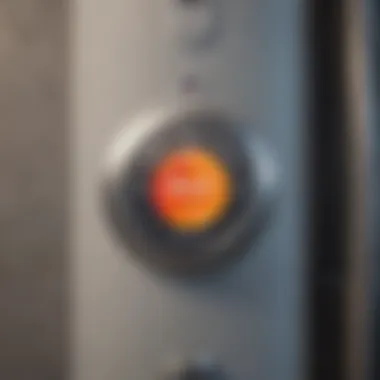
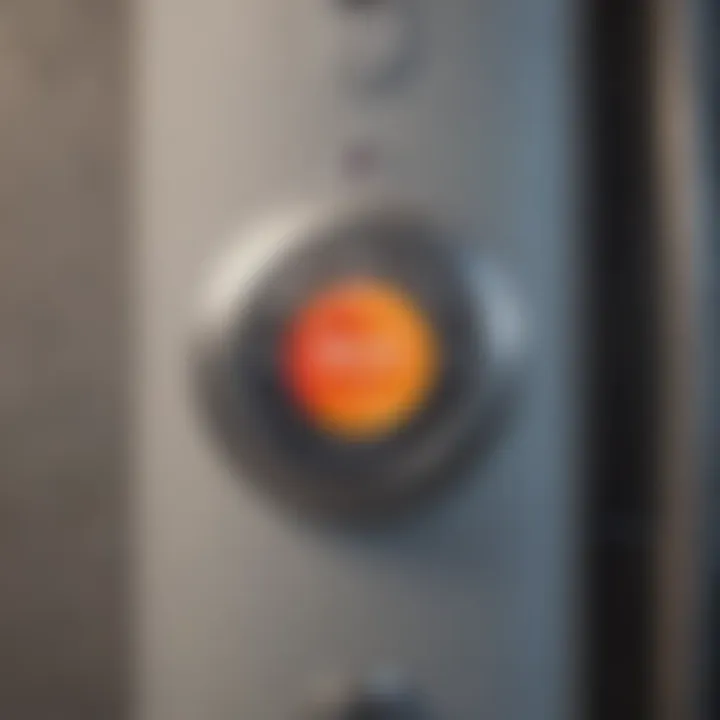
Now comes the crucial step of installing the new thermostat. This is where your preparation pays off.
- Position the New Thermostat: Place it where the old one was removed. Ensure it sits correctly as per the design.
- Reconnect Wires: Following the rememberance labels you made earlier, reconnect the wires securely to their designated terminals.
- Check: Before tightening everything down, double-check the wiring connections to ensure there are no loose ends or misassignments.
Reattaching the Cover Panel
Once the new thermostat is successfully installed, it's time to put the cover panel back on to safeguard your work.
- Align the Panel: Ensure the panel aligns correctly with the gaps.
- Secure with Screws: Use the screws removed earlier to secure the cover panel back in place. Ensure each screw is tight but not over-torqued, causing damage to the panel or threads.
- Inspect for Gaps: A good habit is to inspect the edges to ensure everything looks flush.
Restoring Power and Testing Functionality
The moment of truth arrives when it's time to restore power and test the new thermostat. This final step ensures that all your hard work pays off.
- Flip the Circuit Breaker: Return to the circuit box and switch the breaker back on. You should hear the water heater activate.
- Adjust Settings: Set the thermostat to the desired temperature and monitor how quickly the heater responds.
- Check for Leaks and Sounds: Watch for any unusual behavior like hissing or leaking. If any irregularities arise, turn the power off promptly and recheck your installation.
By adhering to this structured approach, you have successfully replaced the thermostat in your Reliance water heater. Each step builds upon the last, ensuring safety and effectiveness in your efforts.
Troubleshooting Post-Replacement Issues
Replacing the thermostat in your Reliance water heater is a task that can bring a sigh of relief to many homeowners. However, it’s not the end of the road. Sometimes, issues crop up even after you’ve installed the new thermostat. Addressing these post-replacement hiccups is critical. It ensures that not only did you install the thermostat properly, but you also maximized your water heater's efficiency. Knowing how to troubleshoot means you can pinpoint problems faster and possibly save yourself some time and trouble.
What to Do if the Heater Doesn't Function
When you turn on your water heater and nothing happens, panic can set in. You could be staring at a cold shower, or worse, a malfunctioning heater. Begin by taking a deep breath; it might not be the blown circuit you fear. First, check the power supply—make sure it’s working properly. Sometimes, the simplest solution is just flipping a tripped breaker back on.
While you’re at it, consider that the new thermostat might not have been wired correctly. This happens frequently, even for the well-intentioned DIYers. Turn off the power and double-check the wiring. Ensure the connections are solid, and nothing is loose or misplaced. If everything looks good but it still won’t turn on, it could be a faulty thermostat right out of the box.
If you suspect the new thermostat is at fault, contact the retailer or check the warranty; there could be replacement options available.
Common Problems and Their Solutions
Here are some common issues you might encounter after replacing your thermostat, along with straightforward solutions to get you back in warm water.
- Inconsistent Water Temperature: If you notice that your water isn’t reaching the desired temperature, it could be due to the thermostat settings being inaccurate. Use a thermometer to check the water temperature, then adjust the thermostat accordingly. If adjustments don’t help, you might need to recalibrate the thermostat or look for other underlying issues.
- Water Heater Cycles Too Frequently: If your heater is constantly turning on and off, this could indicate a problem with the placement of the thermostat sensor. Modifying its location to a more optimal spot may solve the issue. Likewise, make sure that any objects around it aren’t affecting the reading.
- Leakage Issues: If you notice water pooling around the heater, a leaky connection could be at fault. This isn't uncommon after a thermostat replacement. Check all connections for tightness and replace any worn washers or fittings.
- No Power to the Heater: If you’ve checked your breakers and ensured everything is connected, yet the heater remains lifeless, re-evaluate your circuit connections. You may need assistance from a professional technician if the problem persists.
Being aware of these potential snags and knowing how to deal with them can make a world of difference. Having a fully operational water heater is not just a comfort—it's a necessity in day-to-day living.
Maintenance Tips for Prolonging Thermostat Life
Proper maintenance of the thermostat in your Reliance water heater is more than just a chore; it's an investment in longevity and efficiency. A well-maintained thermostat ensures that your water heater operates at its best, saving you both time and money while preventing future headaches. This section explores practical maintenance tips that every homeowner should consider.
Regular Inspections and Adjustments
Keeping a close eye on your thermostat can pay off. Checking it regularly allows you to spot any irregularities before they escalate into significant issues. It’s a bit like keeping your car's engine tuned; a little attention can go a long way. Here are some key factors to look out for when you conduct your inspections:
- Temperature Accuracy: Use a reliable thermometer to check if the water temperature correlates with the thermostat setting. If there’s a discrepancy, it may be a sign that the thermostat is malfunctioning.
- Physical Condition: Inspect the wiring and the body of the thermostat for any visible signs of wear. If you notice anything strange, it's better to address it early.
- Seating and Tightness: Ensure that the thermostat is securely seated. Sometimes, it can loosen over time, leading to inconsistent heating.
Take it a step further; make adjustments as necessary when you find deviations. Writing down the temperature settings at various times can provide you with a clearer picture over time and helps you catch patterns of malfunction.
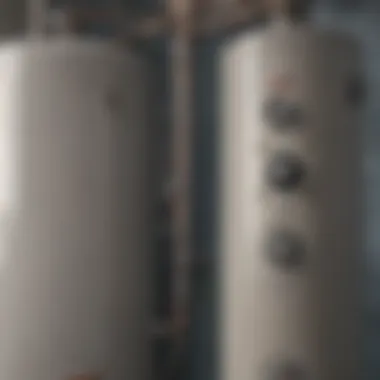
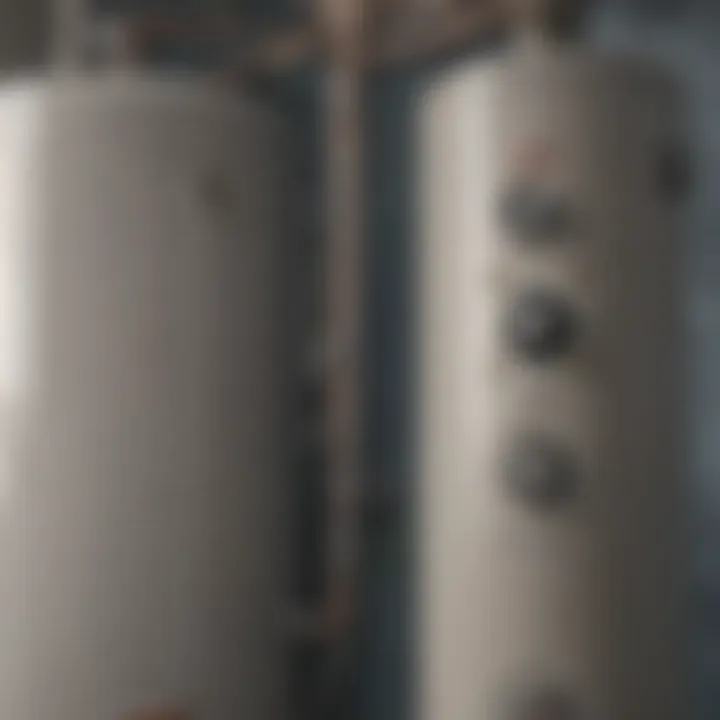
Cleaning Procedures for Optimal Performance
Keeping your thermostat clean is crucial for optimal performance. Dust and grime can interfere with its operation, leading to inefficiencies. Here’s how to do it right:
- Turn Off Power: For safety, disconnect the power to the water heater before cleaning. This precaution is vital to avoid any accidental shocks.
- Soft Cloth Wipe Down: Use a soft, lint-free cloth to gently wipe down the thermostat. Avoid any harsh chemicals which could damage sensitive parts. A mild detergent mixed with water works wonders.
- Check and Clean Wiring: Dust can settle on the wires as well, so carefully clean any exposed wiring using a dry brush designed for electronics. This small step can prevent overheating issues down the line.
After you have completed your cleaning, make a note on your calendar to revisit the thermostat in a few months. Keeping track of these maintenance tasks can be enormously beneficial in extending the life of your appliance.
"An ounce of prevention is worth a pound of cure."
Investing time in these maintenance tips can provide significant benefits. A properly functioning thermostat not only keeps your water heater running smoothly but also enhances overall energy efficiency, ultimately saving you money in utility bills.
Cost Considerations for Thermostat Replacement
When it comes to replacing the thermostat in your Reliance water heater, understanding the financial aspects is crucial. Think of it as laying down the groundwork before diving into the actual replacement process. Not only does this help in budgeting efficiently, but it also sets the stage for informed decision making. This section will delve into the various costs involved, particularly the parts and labor costs, and how these can vary based on different factors.
One key thing to keep in mind is that while doing it yourself may yield savings, it can also mean more responsibility if something doesn’t go according to plan. Weighing the potential risks against the savings is part of the cost consideration puzzle.
Analyzing Parts and Labor Costs
First up, let’s break down the costs into parts and labor. The parts could vary based on the specific model of your Reliance water heater and the type of thermostat required. Basic thermostats can range from $20 to $40, while more advanced models could cost up to $100 or more. Furthermore, there may be additional materials needed, such as wires, connectors, or even tools if you don’t already have them.
As for labor costs, deciding whether to hire a professional can significantly bump up the costs. Professional installation could run you anywhere from $100 to $250, depending on the complexity of the installation and where you live. Here are some things to consider when analyzing costs:
- Type of Thermostat: Digital models often cost more than analog ones but might offer better energy efficiency.
- Wiring: If there are wiring issues, then expect to spend a little more on fixing those.
- Geographical Differences: Labor rates can differ widely from one area to another.
It’s essential to weigh these parts and labor considerations in relation to the expected performance of the new thermostat. This gives you an idea of whether the investment makes financial sense on a practical level.
Comparative Costs with Professional Services
If you’re contemplating hiring a professional, you might wonder how the costs stack up against doing the job yourself. One straightforward way to look at the numbers is comparing the DIY route against hiring a local technician. Generally, DIY repairs can save you a significant amount, especially if you're comfortable working with electrical components.
However, if you're not entirely sure of your skills, entrusting the task to a professional might be wise. Ultimately, this choice boils down to:
- Your Skill Level: If you've dabbled in DIY projects before, replacing a thermostat might not be so daunting.
- Time and Convenience: Not everyone has the luxury of time. Professional services may save you hours of hassle and allow you to focus on more pressing tasks.
- Warranty and Guarantees: Some professionals may offer warranties on their work, adding an extra layer of peace of mind that a DIY job wouldn’t.
Considering all these factors, you will be better equipped to make an informed decision regarding the costs associated with thermostat replacement. Remember, while upfront costs matter, the long-term savings on electrocity bills can ultimately justify your investment.
Deciding whether to take on the task yourself or hire someone is important. Regardless of the choice you make, understanding these cost factors will not only aid in your planning, but also help you avoid any unexpected financial strains down the line.
Culmination and Recommendations
In concluding this article, it’s important to recognize the significant role that the thermostat plays in the overall performance of your Reliance water heater. Understanding how to replace this crucial component not only empowers homeowners but also contributes to energy efficiency and cost-effectiveness in the long run. A well-functioning thermostat ensures that the heater operates within its optimal temperature range, thereby reducing energy consumption and prolonging the lifespan of the unit.
Summary of Key Steps in Replacement
When it comes to replacing the thermostat, remember that the process is straightforward, yet each step is vital for ensuring that everything operates smoothly thereafter:
- Power Down the Water Heater
Safety first! Always make sure to turn off the power supply to avoid any risks of electric shock. - Removing the Cover Panel
Unscrew and carefully take off the cover to access the thermostat. - Disconnecting the Old Thermostat
Note how the old unit is connected, as this will help in the new installation. - Installing the New Thermostat
Fit the new thermostat in place, ensuring all connections are secure. - Reattaching the Cover Panel
Replace the cover carefully. This protects your connections and keeps everything in order. - Restoring Power and Testing Functionality
Finally, switch the power back on and check whether the heater is functioning correctly at the set temperature.
Future Considerations for Water Heater Maintenance
Beyond just the thermostat replacement, it’s wise to keep an eye on your heater’s overall condition. Consider these points:
- Regular Inspections: Just as you might check on a car’s oil, periodically inspect your water heater for signals of wear and tear.
- Cleaning Procedures: Flushing the tank annually helps in removing sediment buildup which can impact efficiency.
- Thermostat Settings: Maintain optimal settings to prevent unnecessary wear on the system; typically, 120°F is enough for most homes.
- Professional Servicing: It’s always a good idea to have a professional inspect the unit yearly to catch potential problems before they escalate.
Invest your energy wisely by implementing these strategies. With proper maintenance, your Reliance water heater can consistently deliver the hot water you rely on, all while staying efficient and cost-effective.







